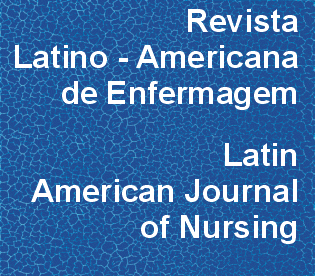Discomfort and unease of the subject in the interpretation movement of a Tuberculosis questionnaire
DOI:
https://doi.org/10.1590/0104-1169.3522.2507Abstract
OBJECTIVE: to propose a discussion about traces of the derivation of meanings, the subjects' discomfort and resistance when they are called upon to signify a questionnaire on the transfer of the Directly Observed Treatment of Tuberculosis policy, in order to reveal the limitations of closed questionnaires in the subject's interpretation process. METHOD: health professionals from a Primary Health Care Unit in Porto Alegre/RS were interviewed and some excerpts from the interviews were investigated in the light of French Discourse Analysis. RESULTS: resistance, discomfort, slips, silencing and the derivation of meanings were observed in the subjects' interpretation. CONCLUSION: the interpretation process has multiple meanings and varies from subject to subject. The questionnaire, as a prototype of the logically stabilized universe, fails when the purpose is to control the interpretation. Its isolated use in health research can entail inexactness or incompleteness of the collected data. Therefore, its use associated with qualitative research techniques is ideal.Downloads
Download data is not yet available.
Downloads
Published
2014-12-01
Issue
Section
Original Articles
License
RLAE’s authorship concept is based on the substantial contribution by each of the individuals listed as authors, mainly in terms of conceiving and planning the research project, collecting or analyzing and interpreting data, writing and critical review. Indication of authors’ names under the article title is limited to six. If more, authors are listed on the online submission form under Acknowledgements. The possibility of including more than six authors will only be examined on multicenter studies, considering the explanations presented by the authors.Including names of authors whose contribution does not fit into the above criteria cannot be justified. Those names can be included in the Acknowledgements section.
Authors are fully responsible for the concepts disseminated in their manuscripts, which do not necessarily reflect the editors’ and editorial board’s opinion.
How to Cite
Discomfort and unease of the subject in the interpretation movement of a Tuberculosis questionnaire . (2014). Revista Latino-Americana De Enfermagem, 22(6), 988-993. https://doi.org/10.1590/0104-1169.3522.2507



